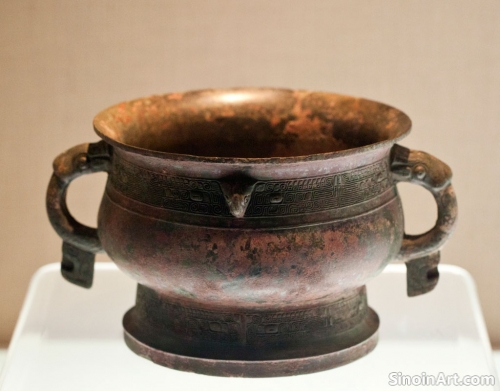Regional Styles of Bronze Ware: Exploring the Diversity of Ancient China
|
While a general style of bronze working existed across ancient China, there were significant regional variations, with different areas developing their own unique forms, designs, and casting techniques. The study of these regional styles helps to reveal the complexity and diversity of ancient Chinese culture. The styles and techniques of the various regions were influenced by both local traditions and also by cultural interchange with other nearby groups.  The bronze ware of the Central Plains region, associated with the Shang and Zhou dynasties, was characterized by complex designs, precise casting techniques, and a strong emphasis on ritual and ancestral worship. These styles often set the tone for the other bronze works of the period. The Central Plains style often dominated later artistic expressions.  In the southern regions of China, such as the Yangtze River valley, bronze ware often featured distinctive forms, such as the unique bronze objects found at Sanxingdui, which also included a wider range of decorative motifs. The styles and forms of the south were unique and distinctive, showing the strong cultural differences between regions of ancient China.  In the northern and western regions, bronze traditions often reflected the influence of nomadic and steppe cultures, resulting in unique combinations of styles and approaches to metalworking. The cross-cultural exchange between China and the nomadic cultures helped to introduce new styles and techniques. The interplay between different styles and approaches helped to create a more varied visual landscape. The study of these regional styles helps to highlight the cultural diversity of ancient China, revealing the importance of looking beyond the traditional narratives that focus exclusively on the central areas of power and influence. The regional variations in style help to broaden our overall understanding of the ancient world. The combination of local and foreign influences helped to create a wide range of different artistic expressions. |
Tag : regional bronze styles, ancient Chinese diversity, Sanxingdui, Yangtze bronzes, steppe influences
Related information
- The Evolution of Bronze Bell Design in China: From Simple Forms to Complex Chimes
- Bronze Ware and Ancient Chinese Mythology: Exploring the Interplay Between Myth, Art, and Ritual
- The Use of Bronze in Ancient Chinese Military Armor: Protection and Power on the Battlefield
- Bronze Ware and the Representation of Mythical Creatures: Dragons, Phoenixes, and the Realm of the Supernatural
- Bronze Ware and the Representation of Women in Ancient China: Social Roles and Power Dynamics
This article explores the evolution of bronze bell design in China, highlighting the transition from simple bells to complex bianzhong chimes, the development of tuning techniques, and their significance in both music and ritual.
This article explores the use of mythological imagery on Chinese bronze ware, highlighting the depiction of dragons, phoenixes, and other creatures, and how these motifs reflected ancient beliefs and helped to connect the earthly world with the spiritual realms.
This article explores the use of bronze in ancient Chinese military armor, highlighting the types of helmets and armor plating, and how bronze was used to provide both protection and power on the battlefield.
This article explores the representation of mythical creatures on Chinese bronze ware, highlighting the symbolic power of dragons, phoenixes, and other fantastical beings, and revealing their connection to ancient Chinese beliefs about the spirit world.
This article explores the representation of women in ancient China through bronze ware, highlighting their roles in daily life and ritual, their depictions in art, and revealing the complex social and gender dynamics of the era.